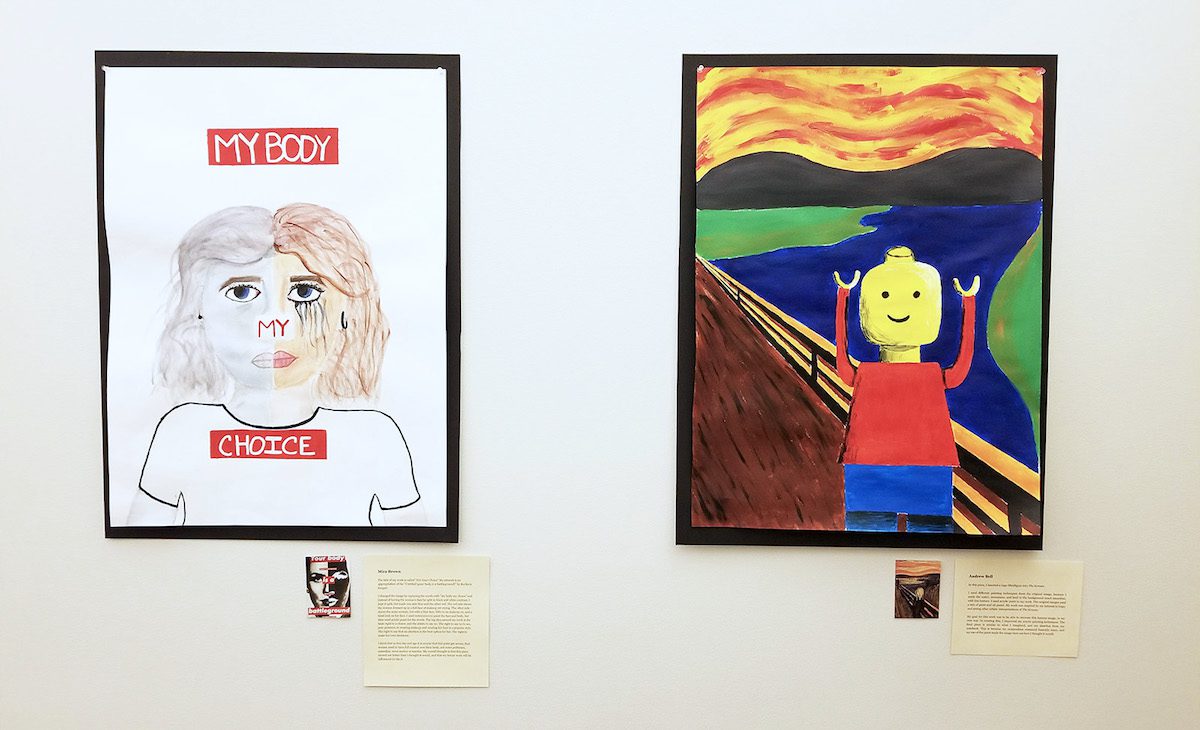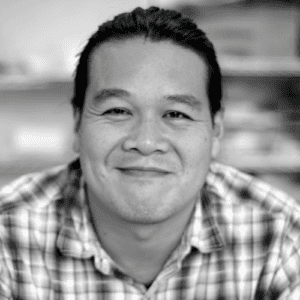People borrow ideas from one another all the time. Good ideas spread because people take them, use them, and pass them along. We see this in all sectors from tech to media to business.
In the visual arts, this appropriation occurs when artists adopt, borrow, or sample aspects of visual culture. Sometimes the source materials are reinvented completely. At other times, they remain almost unchanged. The gray area is where much of the controversy around appropriation emerges.
A Project to Help Students Understand
The project described below considers how to use appropriation in a classroom project, as well as working with students to understand what constitutes the difference between borrowing and stealing. But first, let’s take a look at what the word appropriation means.
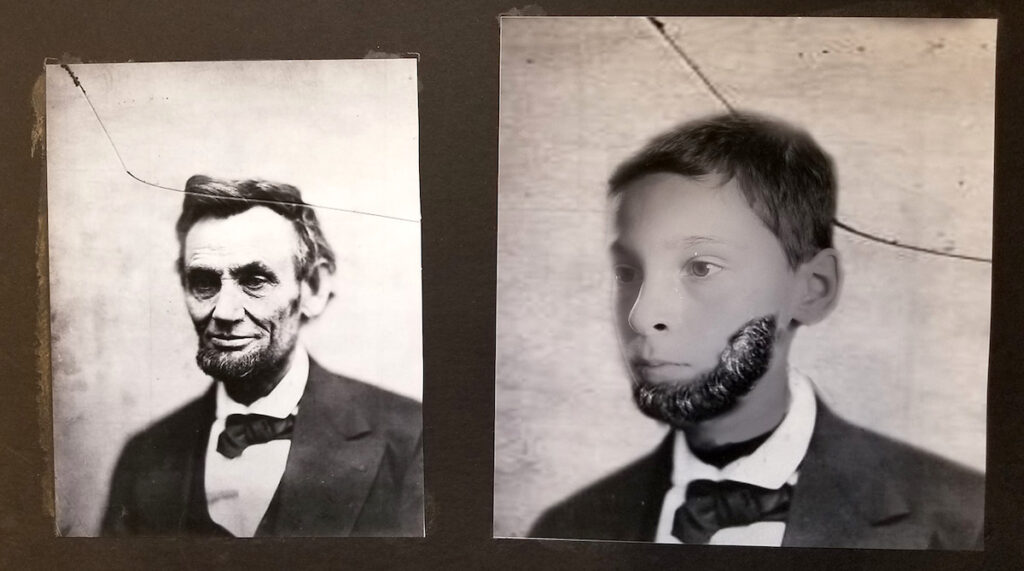
What is Appropriation?
“Good artists copy. Great artists steal.”
One of the founders of Apple, Steve Jobs, often attributed this quote to Pablo Picasso. (Though whether Picasso actually said this is a topic of some debate.) The idea is that an average artist might replicate what others have done, but does not add much meaning to the source material. On the other hand, truly great artists “steal” concepts and ideas. Then, they own them by creating new work that elevates the source and completely transforms it.
An artist who plagiarizes and passes work off as his or her own, without crediting the source, is committing a serious transgression in the creative community. Any borrowing and appropriating of work must be done mindfully, respectfully, and in a way that properly recognizes the original. Additionally, appropriation is often used by corporations and businesses to profit off of recognizable icons and visuals. They use popular images and messaging to sell their products by connecting with familiar visuals and associations people carry with certain objects.
Cultural Appropriation
In addition to notions of appropriation and the appropriateness of taking ideas from other artists, our culture and society are deeply steeped in issues of cultural appropriation. Cultural appropriation is the adoption of the elements of another culture (often a minority group) by members of the dominant culture. It is an unequal exchange in that the appropriators often uses these stolen elements for monetary gain or prestige, without regard for the value, respect, or importance paid to these images and traditions in the original culture.
Cultural appropriation happens in music, films, television, and visual art all the time. It’s often brushed off as “homage.” Other times it’s couched within the idea that “Imitation is the highest form of flattery.” But the reappropriation of cultural music, dance, or visuals by dominant culture rarely preserves the meanings and values of the original source. It isn’t flattery. It’s often just exoticising elements of another culture for personal gain. Halloween costumes, hairstyles, and language are all often co-opted with no regard for meaning.
Both of these approaches have been used by artists for centuries. And, they have been carried off in both respectful and not-so-respectful ways. Engaging your students in a conversation around why one thing might be appropriate and another is not is a good place to start. You can find a helpful discussion guide in the article How to Deal with the Idea of Appropriation in the Art Room.
Here are a few other questions students could consider.
- How do we borrow from the world around us?
- Are there right/wrong ways to use imagery from other cultures?
- Why do corporations and businesses use famous images or cultural traditions in their work?
- What aspect of the image sells products or calls attention to issues?
The Project
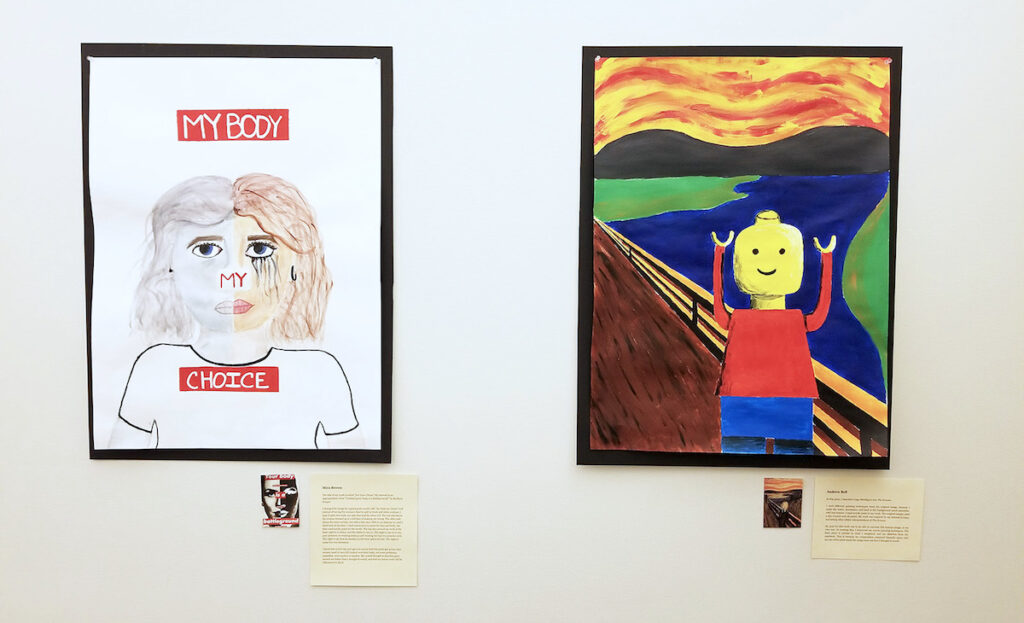
This project has 3 parts.
- Research
To begin this project, have your students research examples of appropriation in artwork and mass media. Have them focus on motives and reasons for the practice. - Make Art
Then, have each student choose an original artwork as inspiration. Task your students with appropriating the imagery in a way that alters the meaning. In this way, they will make the image their own. Consider allowing students to use tools like tracing paper, light boxes, and the grid method. - Reflect
Finally, have your students create an artist statement. The statement should reflect how they have shifted the work and why they made the choices they did. It should also properly credit the source.
Adding a Layer of Complexity
I enjoy teaching this project with students using more traditional media like drawing and painting. However, these aren’t the only options.
To take this project a step further, you may consider adding the following options.
- Collage
Collage is a great way to encourage students who aren’t as comfortable with drawing or painting. Photographs and advertisements can add another layer of appropriation. - Photoshop
If you have the resources, having students insert themselves into these pieces can be a lot of fun. Be sure your students have the necessary skills before you add this as an option. Namely, working with the Selection and Clone tools. Also note that if you don’t have Photoshop, an open-source version like GIMP is a workable option!
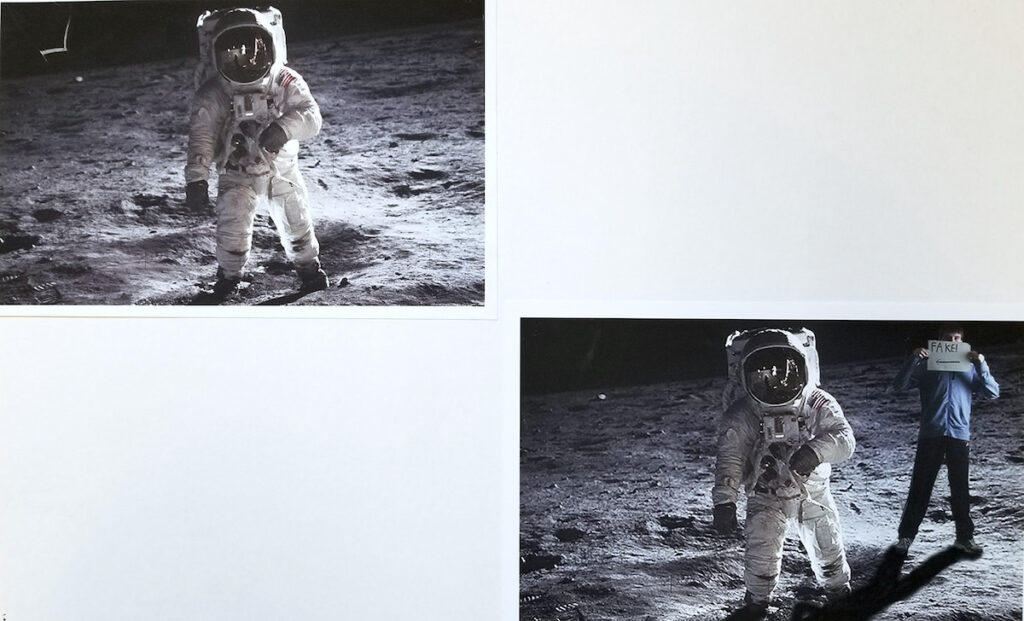
Although great work comes from this project, the reflection piece is the most important. Having students articulate why their approach isn’t stealing and pays respectful homage to the source is incredibly beneficial. Not only will they learn to think deeply about their work, but they will also learn how important it is to cite sources. These skills will serve them throughout their school careers.
How have you used appropriation in your classroom?
Are there times your students have pushed the bounds of acceptability for borrowing from another source?
Magazine articles and podcasts are opinions of professional education contributors and do not necessarily represent the position of the Art of Education University (AOEU) or its academic offerings. Contributors use terms in the way they are most often talked about in the scope of their educational experiences.
